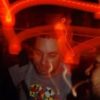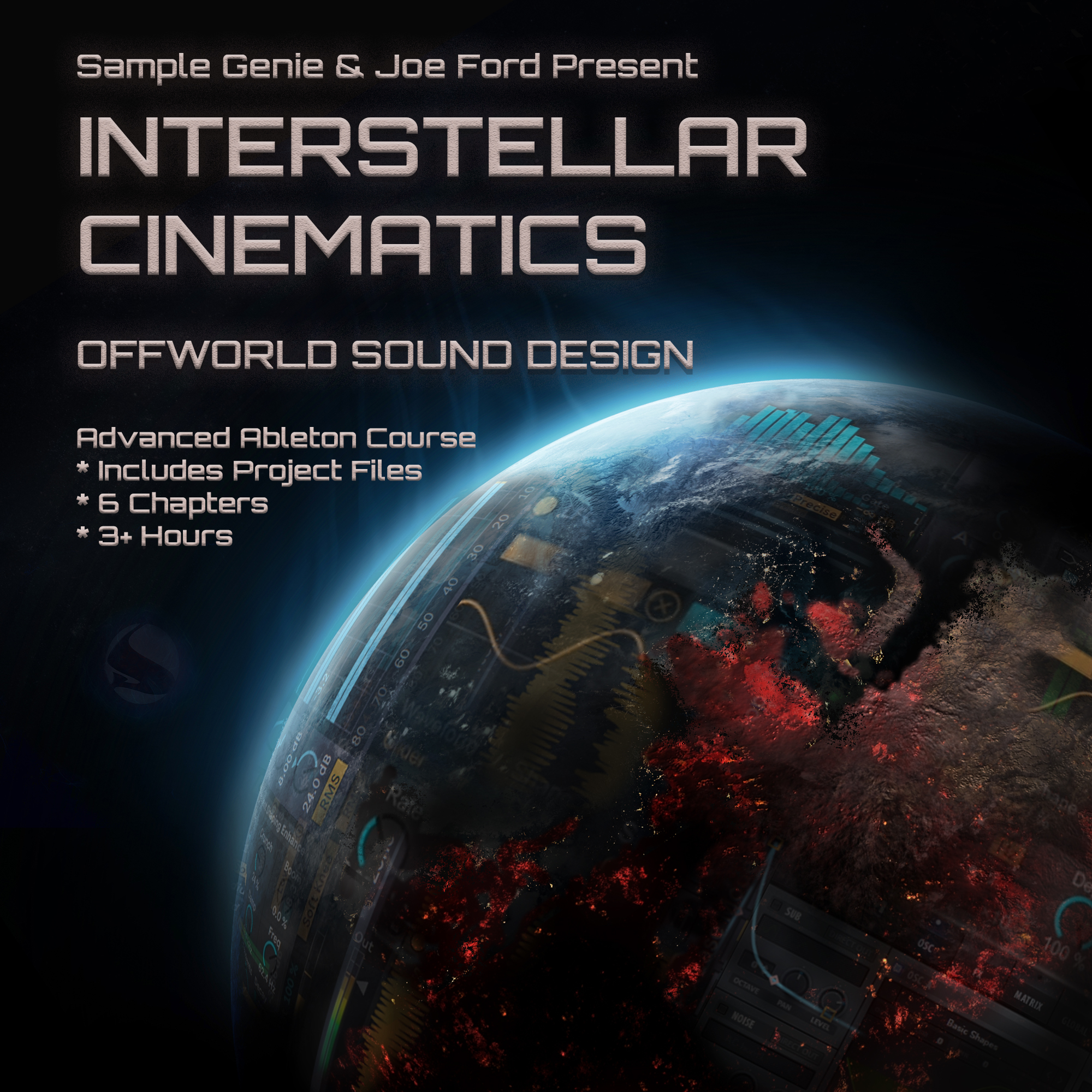Analysis of S6E10: Hybris – Xtreme Resampling
- This topic has 0 replies, 1 voice, and was last updated 5 years, 3 months ago by ,
 Harry.
Harry.
-
AuthorPosts
-
-
2019-04-09 at 20:20:01 #75098,
 HarryModerator
HarryModeratorThe second Hybris tutorial for season 6, and the first Sample Genie video featuring Bitwig. Split in to five parts, and covering the main elements to build off of. Introduction covers the following:
– Hybris recently started using Bitwig 2, after several years as a Cubase user.
– References his track “Click Bait” as the reference point for these videos; using a single source sample to write a track.
– This video features Bitwig v2.4, which is the version with the updated sampler.
– Hybris’s aim is to demonstrate interesting ways to use a single sample for sound design.Part 1 – Kicks (09:28)
01:15 – single source sample used is QZB_FX_FADEANDGATE.
– Sample Genie has uploaded this sample here: https://soundcloud.com/digitallabz/qzb-fx-fadeandgate
– Hybris likes this sample because of the range of frequencies in it.02:10 – looking at Bitwig’s Drum Machine device.
– Any slot/cell can be an instrument.
– Initially loads a Bitwig sampler.03:00 – using the Clip mode, which is similar to Ableton’s Session View.
03:30 – starting with creating drums, specifically kicks for this part.
– States that for him, sound design is 50% planning vs. 50% experimenting.
– Recommends trying both approaches.04:20 – explains qualities he’s looking for to create a kick with.
– Energy around 100~150 Hz.
– Makes sure the start point is off-phase, not on a zero crossing, in order to get a pop/click to create a transient.
– Makes the sound mono.
– Records two bars for a kick pattern, then goes further in to shaping the sound.06:15 – adjusting envelope settings on the sampler, then adjusting pitch, and adjusting the sample region.
07:25 – adds a pitch envelope modulator.
– In Bitwig 2, you add an ADSR modulator to a modulator slot, then assign it to the sampler’s pitch.
– Sets a very short attack.
– States this is a quick demonstration, normally he would spend more time on creating the sound.
– Adds some EQ, using FabFilter Pro-Q2.
– Explains how in Bitwig, you can assign effects per drum pad/cell, or to the entire output of the drum machine.Part 2 – Snares (09:17)
– This part has a similar set-up approach with the drum machine, however the snare is made of three layers, and uses an Instrument Layer, which lets you trigger three samplers with one key press.
– You can use Instrument Layers in many ways, thinking in terms of pads, basses, and FX.01:05 – transient layer for the snare.
– Again, slices off-phase, just a little bit of pop at the beginning of the sound.
– Duplicates this layer two more times inside the Instrument Layer, will work on crafting each of these using the same source sound.02:30 – first layer peaks around 300 Hz.
– Achieved with pitch and the sampler’s ADSR envelope.03:20 – decides the second layer will be the noisy layer.
– Hybris says you can experiment with a different section of the sample used, instead of using the exact same sound for all three layers.04:10 – trying different modes of the Bitwig sampler.
– Textures mode is granular.
– Motion parameter effects playhead position, can add noise to the sound; keep in mind whether you want this extra noise or not.05:20 – third layer, for the body, also done in textures mode.
– Focus is on providing mid-range frequencies.06:15 – adds a pitch envelope, which he says is not typical of real life snares.
07:00 – adds a channel strip affecting all three snare layers, using Slate Digital Mixrack.
– EQ going in to a compressor, and then in to a surgical EQ.Part 3 – Percussion (20:29)
– Starts with crafting hi-hats.01:00 – simple to create, just need to find noise.
– Applies a high pass filter, makes envelope adjustments, then uses filter resonance turned up to find key frequencies, then turns down. Also tweaks output volume and pitch.03:20 – duplicates the hat sampler to another drum pad/cell, makes some edits to parameters, programs 16th notes, then explains Bitwig’s Groove function. Essentially, it is global shuffle.
04:45 – duplicates hat cell for a third time, creates another variation, adjusts the clip notes so these play some of the 16th notes.
06:15 – adding a percussive layer.
– Uses a different portion of the source sample.
– Decides to mangle this sound, adds a comb filter and a frequency shifter, then groups them together in one container to add modulator slots.08:40 – looking at the ParSeq-8 modulator.
– Similar idea as Elektron devices and their parameter locks.
– Each step can lock all the parameters of everything in that step.
– Gives an example of a step where cutoff frequency is at 90%, next step is at 80%, third step is another value, etc.
– Assigns modulations for each step, says this takes a bit of experimenting to get good sounding results.15:15 – making another percussive element, using a different part of the source sample, and this time experimenting with loop start time and the sampler’s freeze function.
– ADSR envelope modulator assigned to sampler’s speed knob of the textures mode, and the start position of the playhead.18:10 – uses a different modulator (Step Sequencer) assigned to the playhead start position.
Part 4 – Bass (19:06)
– Starts with a sampler on a new track.
– Need to make the source sample a lower note, so Key Tracking needs to be set to 100%, instead of 0%, which is single one-shot hits.01:20 – adjustments to create a bass
– Loop Selection.
– Crossfade amount between start and end of the loop.02:30 – decision to do a simple bass, but then start working on modulating.
– Sidechain modulator using an audio file.07:20 – making another bass.
– Different region and effects, but similar approach.
– Cycles mode of sampler is similar to a wavetable synth.12:45 – resampling the second bass.
15:45 – some advanced modulation nesting demonstrated.
– Modulators affecting other modulators.17:00 – high pass filter with an ADSR envelope on the cutoff and resonance.
Part 5 – Atmos (20:11)
– Mangling the atmos sample to make a new atmos sample.
– Sets sampler to Textures mode, playing multiple voices.03:00 – each voice with a notch filter, and each notch with a different LFO modulator.
06:10 – attempt at a melodic element.
– Sampler in Cycles mode again.08:45 – voice stacking demonstrated again.
10:00 – lots of FX using an XY Effect container; four different effects chains, and then an XY pad to morph between them.
16:25 – audio sidechain modulating all of the atmos’s XY Effect container.
– Ends by recommending this as an exercise, getting as much as you can get out of your tools.
—
THOUGHTS & QUESTIONS
– The material in part 3 with the ParSeq-8 modulator could lend well to this month’s Lamp Session challenge, could use as an arpeggiator.
– My favorite new techniques from this were the voice stacking features, and the groove function.
– Some of the techniques and ideas behind Hybris’s approach are also demonstrated in Cubase, in one of his earlier Sample Genie videos: https://sample-genie.com/product/03-hybris-creative-percussion/
– Write up of the Creative Percussion video: https://sample-genie.com/topic/analysis-of-s1e03-hybris-creative-percussion/
– Hybris did a recent interiew with In Reach, can be found here: http://in-reach.co.uk/sofa-king-sick-hybris-qa-sofa-sound/"Knowledge kept is knowledge lost." - Bobbito Garcia
-
-
AuthorPosts
- You must be logged in to reply to this topic.


